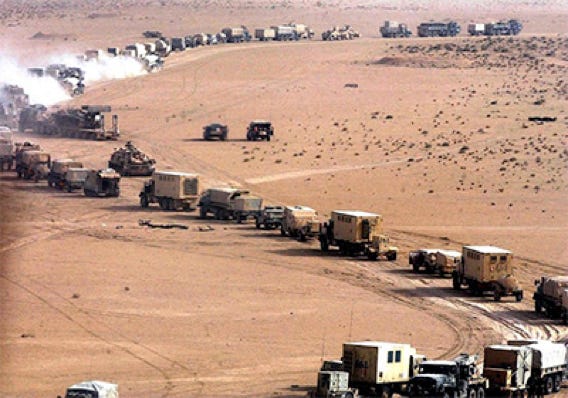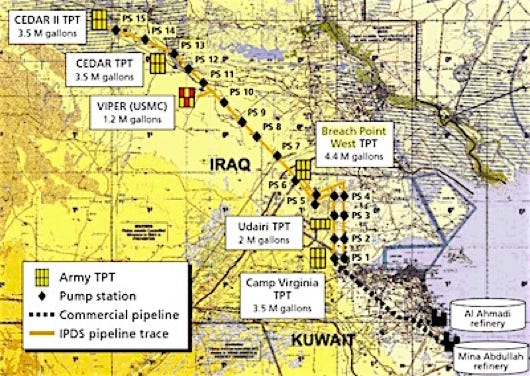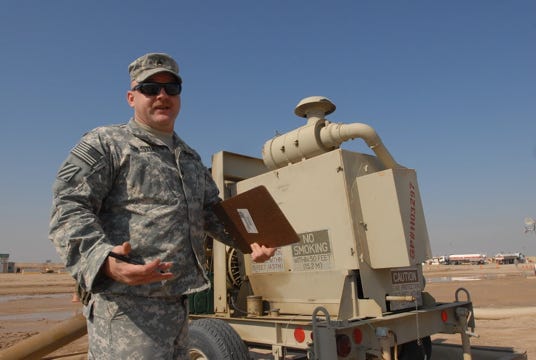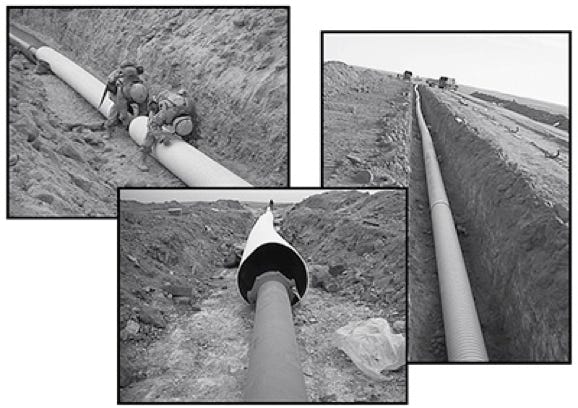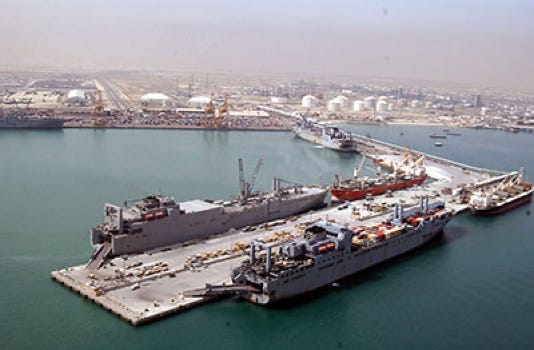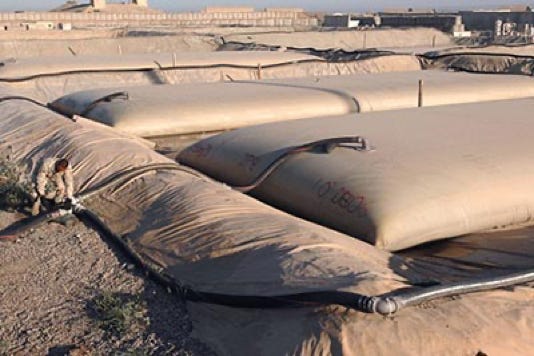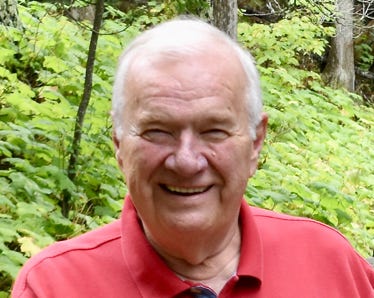Talking Proud: Service & Sacrifice
Logistics in the Iraq War: “A Herculean feat”
“Good generals study tactics. Great generals study logistics”
Providing enough fuel
“Fill ‘er up Jack!”
Now switch gears again. Most will agree that the provision of fuel was the top priority in war planning and execution.
Seven reserve component fuel truck companies arrived in Kuwait between January and March 2003, and prepositioned stocks were moved from Qatar to Kuwait. Of course, that was not going to be enough.
Complicating the fuel issue was the fact that there was a shortage of fuel trucks. As a result, the Army decided to distribute bulk fuel using a tactical pipeline known as the Inland Petroleum Distribution System (IPDS) once the race to Baghdad was on. The manner in which the Army did this, to me, is incredible.
As you can imagine, there was no such pipeline inside Iraq to support the invasion. The Army had to build one, and it did so in phases, following right behind the combat force moving north.
This map provides an overview of the system. The objective was to build the pipeline from Camp Virginia through Camp Udairi to Breach Point West on the Iraqi border, all in Kuwait, and then to CEDAR II at Tallil AB, Iraq. Then, the fuel could be moved elsewhere by truck. The Mina Abdullah refinery in Kuwait already had a pipeline from there to Camp Virginia, so that part was easy. Work started on the rest before the war started.
The 62nd Engineer Battalion (Combat) (Heavy) constructed it. The 62nd deployed to Kuwait on January 14, 2003, and was the first US combat engineer company in the country. US forces were required to take Tallil early on to, among other things, enable the building of the IPDS from Kuwait to Tallil. The 62nd had about 750 soldiers to do the entire job of building the pipeline from Camp Virginia to Tallil.
A Quartermaster platoon deployed to Kuwait in 2002 to build a tactical petroleum terminal (TPT) at Camp Virginia, such as the one shown here. Then, in January 2003, the 240th Quartermaster Battalion deployed to Kuwait to construct TPTs at the Mina Abdullah refinery, at Camp Udairi, and at Breach Point West. The 62nd Engineer Battalion (Combat) (Heavy) was tasked to construct the pipeline. The 63rd's A and B/226th Engineer Company built 51 miles of IPDS from Camp Virginia through Camp Udairi to Breach Point West, while the 808th Engineer Company concentrated on building the TPTs. They would also build a secondary and parallel line over that same 51-mile route as projected daily fuel requirements increased with the war approaching. The units had to do this amidst maneuvering units moving all around them.
Once the war started, two squads from the 808th crossed the Berm, attached to the USMC's 6th Engineer Support Battalion, and started digging and laying pipe while the combat forces moved ahead. Then, on March 22, the rest of the 808th crossed and secured their base camps in Iraq. They built from Breach Point West to LSA VIPER (58 miles) and completed this section by April 14. Initial planning was adjusted as maneuver units had to secure the destination points first. With LSA VIPER completed, work began to extend to LSA CEDAR I, about 30 miles.
The B/226th continued building the pipeline while the 808th built the TPTs. They completed this by April 20.
The original plan was to go to LSA ADDER near Tallil, but that was changed to LSA CEDAR II, a bit north of ADDER. The 34-mile link from LSA CEDAR to the terminus at LSA CEDAR II at Tallil AB was completed on May 13. There was fighting all around the effort, and trucks carrying pipes had to weave through the combat to where they were needed. All kinds of fill and tests had to be conducted thereafter, but I won't go into those other than to say everything passed muster.
The force used over 90 million gallons of fuel in the first three months of OIF, 60 million gallons of which were transported via IPDS. Drawing from a Baltimore Sun article, tank divisions needed to refuel every four to six hours; the M1 Abrams tank ran about two miles per gallon. Tallil, specifically CEDAR II, would become a fuel center in the early days of the war. I have found some who say fuel supplies were robust. I have also found some analysts who have said planning figures were far too conservative, that 24-hour operations consumed more fuel than even the most robust estimates. I don't know who is right.
In addition to the IPDS, the "Fuel Masters" of Corps Support Command filled large bags of JP8 fuel, some as large as 210,000 gallons, and cradled them in sand berms, lining them up side by side for more than a football field. The fuel bladders shown in the example photo hold 50,000 gallons.
Fuel farms were set up in northern Kuwait, and prepositioned stocks were moved from Qatar to Kuwait. Once the force launched off the mark, these kinds of fuel farms were quickly placed in Iraq at those LSAs I introduced earlier.
I should also say that Forward Area Refueling Points (FARP) were set up as the force moved north through Iraq. These were mostly for helicopters. They were often set up as stand-alone entities without any protection. Indeed, the long fuel supply lines often went without protection.
Since the plan called for great speed, there was great emphasis on fuel resupply capabilities during the planning phase. Lt. General William Wallace, the V Corps commander, commented that so much attention during planning was placed on fuel that, in retrospect, some of that focus should have been reallocated to other kinds of supplies. He is referring to the problems incurred with too few trucks, not enough spare parts, and issues with ammunition.
Click to zoom graphic-photo
